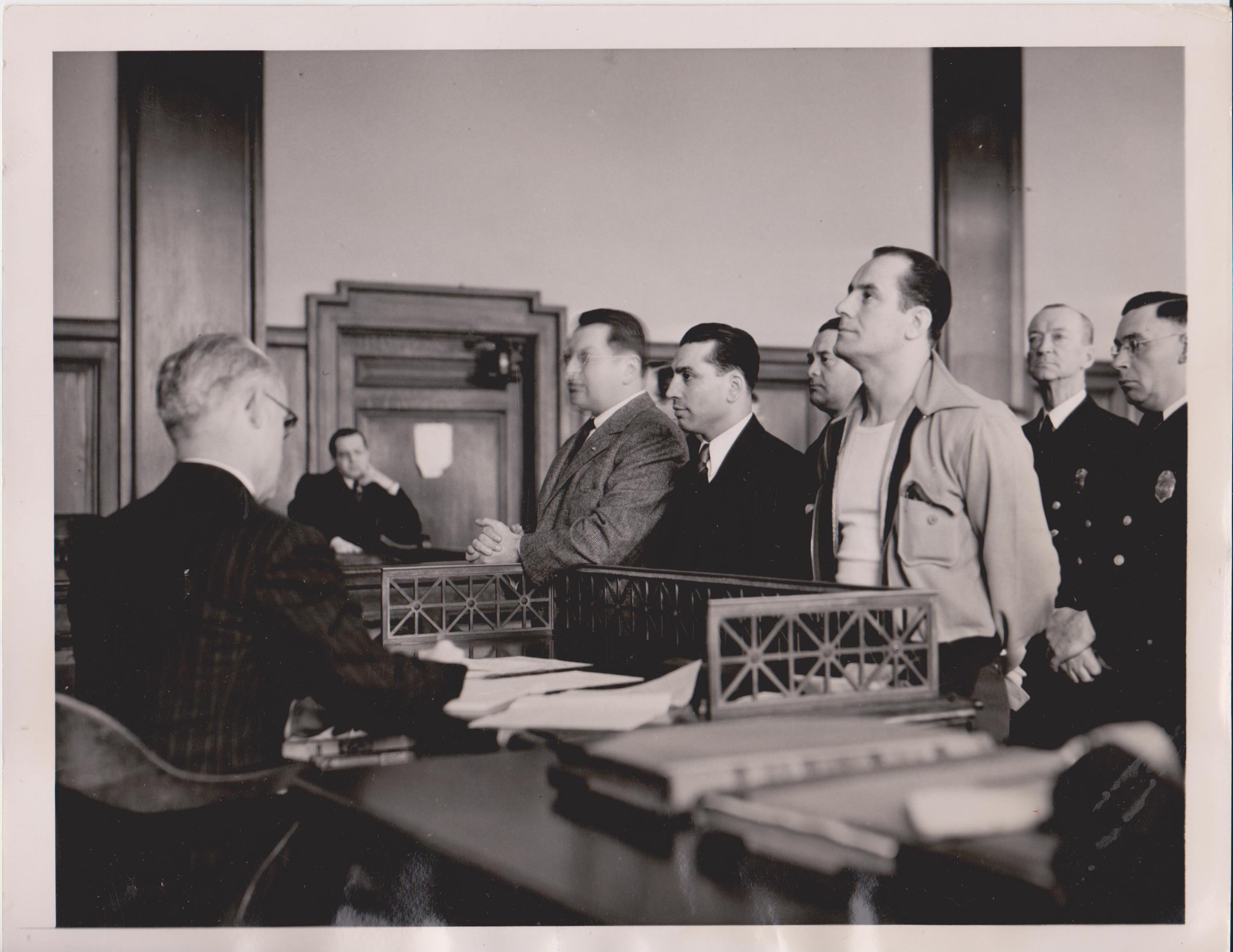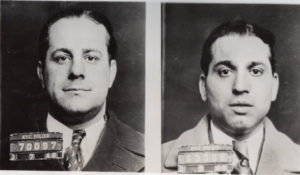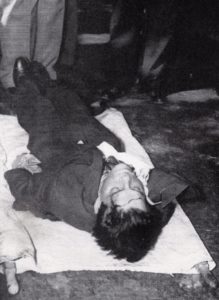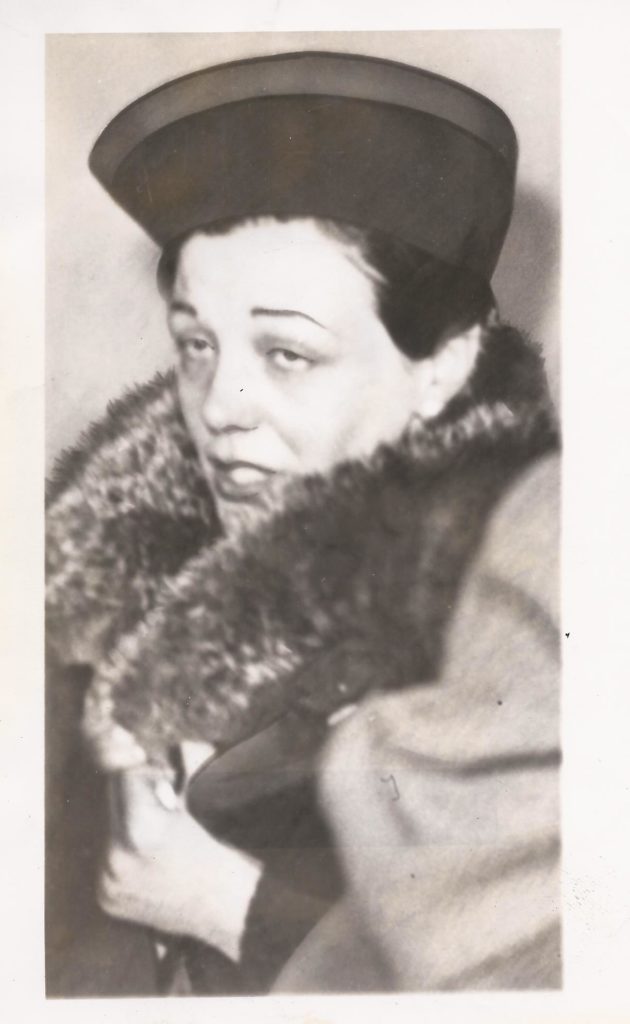Dealing death in drag
Eighty years ago, Murder Inc. gunman Harry ‘Happy’ Maione donned a dress and makeup to take out two disobedient union men

It was February 6, 1939. A loud bang at three a.m. disrupted the winter silence and slumber for residents of the apartment building at 1977 Bergen Street in Brooklyn, New York. Landlord Edward Duboff at first dismissed the noise, attributing it to knocking water pipes. Several hours later, however, Duboff ventured into the building’s basement. When he passed by the door of his lower-level tenants – roommates Cesare Lattaro and Antonio Siciliano – he noticed something oddly off-kilter: silence. The dog residing with the two occupants of that apartment always barked when Duboff walked through the hall. Always. Suspicious and concerned, Duboff entered the men’s dwelling, and into a scene of chaotic carnage.

The subsequent investigation produced two possible theories: (1) The victims were casualties of recent underworld/union strife, or (2) the victims, both of whom had wives in Italy yet lived like bachelors since arriving in New York, died during a jealous rage. Although police summarily dismissed the latter theory, they hauled in Siciliano’s alleged girlfriend, Connie Rampes, for questioning. Upon being told her murdered beau was a married man, Rampes remarked, “He got what he deserved.”
Fact is stranger than fiction, and that statement is no truer than in the wacky world of organized crime. In the spring of 1940, headlines about a contract killing squad based in Brooklyn splashed across newspapers across the country. The coverage introduced America to a colorful cast of hitman and outlandish courtroom revelations.
Harry “Happy” Maione, a temperamental and undeniably menacing man from Ocean Hill, Brooklyn, maintained an elite spot on this killer roll call. The nickname was little more than a tongue-in-cheek moniker. Happy only smirked, snarled or scowled. His name and criminal reputation (arrest record beginning in 1924, totaling 32 arrests but only four minor convictions by 1940) grew to infamous proportions upon the sensational news of the Mob’s killer combination, which the press dubbed “Murder Inc.”
“I know this man Maione to be a mobster, a gangster and a murderer, but I can’t prove it,” Magistrate Sylvester Sabbatino declared in March 1934.
By the time William O’Dwyer, Brooklyn’s new district attorney, began whisking into custody purported members of this sordid syndicate, strange tales emerged in short order, particularly from the first-hand accounts of Murder Inc. employees Abe “Kid Twist” Reles, Anthony “Duke” Maffetore and Abe “Pretty” Levine. Once the DA’s office sorted out a number of the decade-long list of unsolved murders, and the hierarchy of this sadistic enforcement arm of New York’s mobsters, the stories revealed an almost inconceivable degree of premeditation and brutality. They ranged from cruel to just plain weird.

Police booked alleged murderers Maione, Harry “Pittsburgh Phil” Strauss and Frank “The Dasher” Abbandando on March 7, 1940. Based on information gained from the flapping lips of former Murder Inc. members turned witnesses, authorities expected indictments on all three for the 1937 icepick and meat cleaver murder of low-level hoodlum and suspected “stoolie” George “Whitey” Rudnick. Prosecutors later severed Strauss from the Rudnick murder charge but paired him with co-defendant Martin “Buggsy” Goldstein for the equally heinous 1939 murder of “Puggy” Feinstein.
While the details of Rudnick’s agonizing ordeal fell squarely into the realm of indignant ruthlessness, the killing of two union men in 1939 demonstrated the tenacity and meticulous planning the hired guns were capable of. The seedy details, provided largely by Angelo Catalano and Joe “The Baker” Liberto, were aired by Assistant D.A. Burton Turkus. During the high drama of courtroom sparring, Maione was cocky, while Turkus was snarky. The accusations and testimony shed light on one of the most bizarre criminal escapades the gang ever executed.
“On February 9, 1939, when you were dressed as a woman, painted and powdered, didn’t you, with others, go into a place and kill two plasterers’ helpers?” Turkus asked Maione.
“I did not,” Maione smugly retorted.
Turkus continued a barrage of queries into Maione’s criminal past, from homicide to rape to plots against witnesses.
“Did you send Gurino to take out Joe ‘The Baker’”?
Maione, visibly angered by every caustic question, shot back, “Why don’t you ask him that?”
Throughout the verbal brawling, defense attorney David Price frequently and desperately pleaded: “Maione! Don’t answer that!”
The back story
Murder Inc. boss Louis “Lepke” Buchalter’s rackets in New York ran the gamut from textiles to narcotics, and when trouble brewed or people resisted gangland control, bad things happened. This time involved the plasterers’ union, Local 65 of the Hod Carriers, Building and Common Laborers’ Union. Specifically, some members felt they should not have to pay the Mob any dues (a $1-a-day kickback).
When Lepke got wind of the insurrection, he sent word down the ranks to the boys in the enforcement department to rectify the situation. They delegated the job to a few men within the union itself. The intended victim was Colagero Verusso. The union men involuntarily elected to “eliminate” the troublemaker were Cesare Lattaro and Antonio Siciliano. Neither of the plasterers wanted to take part, and went so far as to warn Verusso, who in turn mentioned his knowledge of the plot to another man – who happened to be tight with Gesuale Capone, a union delegate and also the brother of Murder Inc. middleman Louis Capone. Verusso was “promised” safety if he ceased running his mouth about the alleged threat. In a further good-faith offering, the hoods invited him to a party at 88 Central Avenue, the home of gangster Sebastiano Aloi. On February 2, 1939, Verusso took the bait and found himself cornered by four men, Aloi among them. The men pummeled Verusso while haphazardly attempting to bring about his death via twine garrote. Party guests heard the screams, which sent the perpetrators fleeing before completing the job. Police arrested the four culprits eventually, but in the frequent revolving door of 1930s justice, the case was dismissed. But the hitmen still had Lattaro and Siciliano in their crosshairs. Murder Inc. had no intention of letting the boss down again.
The problem
Cesare Lattaro and Antonio Siciliano were well versed in how the Mob operated and the fury their previous disobedience could bring to them. With that knowledge ever present in their minds, the men maintained a “one-eye-open” existence at all times. They were extremely cautious and made the Mob henchmen truly have to work hard to catch them off guard. The primary members of the hit squad resolved to call a meeting to discuss finding a way to get the duo alone and in shooting range. There, of course, had to be some weakness to exploit. They thought, and they found one.
The solution

Lattaro and Siciliano liked the ladies, or so their reputation as “lotharios” and “playboys” around town suggested. The murderous plotters took that information into consideration, realizing it was possibly their best shot at whacking the disobedient pair. At some point during the group discussion, they settled on the idea of disguising one of their own as a woman. Maione, whose stature best suited the masquerade’s requirements, was chosen. A female go-between (of whom both the stalkers and the stalked were familiar) set the stage, telling Lattaro and Siciliano that a “blind date” would be paying them a visit.
On the evening of February 6, 1939, Happy Maione, Frank Abbandando and Vito Gurino prepared for the job. From lipstick to a white blouse, blue skirt to heeled shoes, Gurino’s wife, Gertrude, provided all the feminine accouterments to transform Happy into a believable “lady caller.” He kept his most precious accessory – a .38 revolver – concealed within a fur wrap.
The trio arrived at the address in separate vehicles. Maione and Abbandando rode together; Gurino’s primary duty was to drive the diversionary “crash” car, and (if necessary) provide backup. Maione knocked on the apartment door. Siciliano let the “lady” in, but quickly realized his grave error in doing so. Maione brandished his firearm, Abbandando charged in from behind, Gurino behind him. Maione and Abbandando fired four rounds into Siciliano’s back, but not before he reached the bathroom, releasing his pet bulldog. In the melee that ensued, the canine was shot twice (by Gurino, who was later lambasted in newspapers for, among other despicable exploits, violating underworld code for killing the victim’s dog). Cesare Lattaro, asleep in the bedroom, took two bullets to the back of the head. Several days later, the same homicidal entourage ambushed and killed a fourth dissident, Felice Esposito, only this time sans the makeup and women’s fashion.
Epilogue
Maione and Abbandando were found guilty of murdering George “Whitey” Rudnick. They appealed and won a new trial, but it was all in vain. After another guilty verdict, the pair met the Grim Reaper in Sing Sing prison’s electric chair on February 19, 1942. Vito Gurino, who initially went on the lam during the investigation, turned himself in later to face indictments for several murders, including of the two plasterers. Several trials ensued, but taking advantage of plea deals, Gurino avoided the electric chair. He received a sentence of 80 years to life. He died of a heart attack in Dannemora Prison in 1957.
Christian Cipollini is an organized crime historian and the award-winning author and creator of the comic book series LUCKY, based on the true story of Charles “Lucky” Luciano. Go to www.ganglandlegends.com.
Feedback or questions? Email blog@themobmuseum.org





